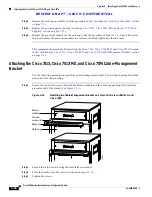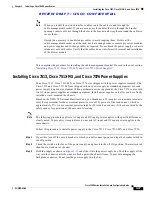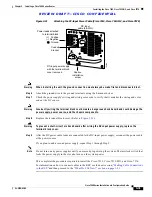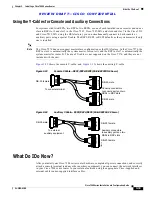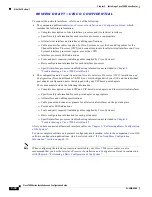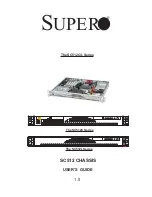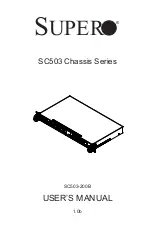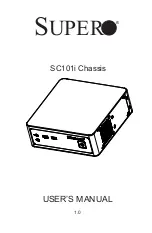
4-6
Cisco 7500 Series Installation and Configuration Guide
OL-5008-03 B0
Chapter 4 Performing a Basic Configuration of the System
Configuring the Software Configuration Register
Bit 8 controls the console Break key. Setting bit 8 (the factory default) causes the processor to ignore the
console Break key. Clearing bit 8 causes the processor to interpret the Break key as a command to force
the system into the bootstrap monitor, thereby halting normal operation. Regardless of the setting of the
break enable bit, a break will cause a return to the ROM monitor during the first few seconds
(approximately 5 seconds) of booting.
Bit 9 is unused. Bit 10 controls the host portion of the IP broadcast address. Setting bit 10 causes the
processor to use all zeros; clearing bit 10 (the factory default) causes the processor to use all ones. Bit
10 interacts with bit 14, which controls the network and subnet portions of the broadcast address.
Table 4-4
shows the combined effect of bit 10 and bit 14.
Bit 11 and bit 12 in the configuration register determine the data transmission rate of the console
terminal.
Table 4-5
shows the bit settings for the four available rates. (The factory-set default data
transmission rate is 9600.)
Table 4-3
Default Boot Filenames
Action/Filename
Bit 3
Bit 2
Bit 1
Bit 0
Bootstrap mode
0
0
0
0
Default software
0
0
0
1
cisco2-RSP
0
0
1
0
cisco3-RSP
0
0
1
1
cisco4-RSP
0
1
0
0
cisco5-RSP
0
1
0
1
cisco6-RSP
0
1
1
0
cisco7-RSP
0
1
1
1
cisco10-RSP
1
0
0
0
cisco11-RSP
1
0
0
1
cisco12-RSP
1
0
1
0
cisco13-RSP
1
0
1
1
cisco14-RSP
1
1
0
0
cisco15-RSP
1
1
0
1
cisco16-RSP
1
1
1
0
cisco17-RSP
1
1
1
1
Table 4-4
Configuration Register Settings for Broadcast Address Destination
Bit 14
Bit 10
Address (<net> <host>)
Off
Off
<ones> <ones>
Off
On
<zeros> <zeros>
On
On
<net> <zeros>
On Off
<net>
<ones>

